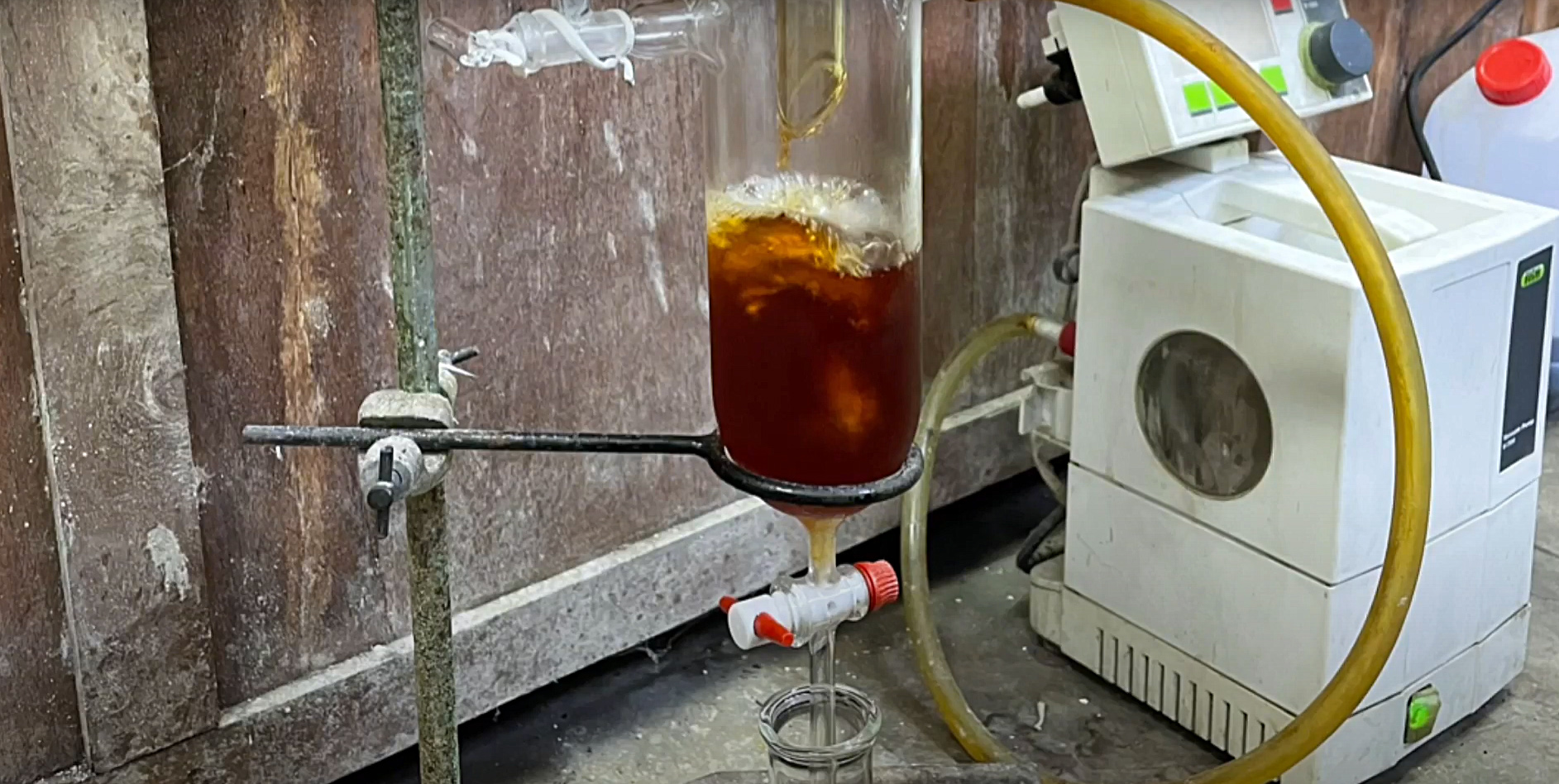

Anita Alni
Myristica fragrans, most commonly known as nutmeg, is an indigenous evergreen tree found in Maluku Island1 and largely cultivated for various purposes in medical sectors. Among the products of processed nutmeg kernel and mace, the Myristica fragrans essential oil (MFEO) has found extensive applications in the realms of holistic medicine and the fragrance industry1. The MFEO can be extracted by a series of process such as hydro distillation, steam distillation, supercritical fluid extraction, microwave, and ultrasound-assisted techniques2. These processes frequently yielded substantial quantities of solid waste which are often discarded and not maximally harnessed3. We obtained solid waste from PT. Indosains, that collect nutmeg from Sumatera, Maluku Islands and Papua, and carried out an in-depth analysis on post-processed nutmeg waste with the aim of elucidating the constituent compounds therein.
The post-processing residual powders derived from Myristica fragrans, sourced from West Java in the year 2023, were subjected to maceration with methanol for 24 hours then underwent vacuum evaporation, yielding the extract of nutmeg waste. The obtained extract was subsequently employed in a silica gel vacuum liquid chromatography (VLC) procedure for separation led to the isolation of distinct major fractions, denoted as Fractions 1a through 11a. Fractions 6a and 7a were combined and then subjected to a column chromatography step. As a result, Fractions 1b through 40b were obtained. Fractions 22b through 26b were pooled together and subjected to a purification step using radial chromatography, resulting in attainment of Fractions 1c-25c. With the same purification method, Fraction 33b through 40b gave major fractions denoted as Fractions 1d-20d. Subsequently, Fraction 6c, 23c, and 15d were then selected for characterization using Nuclear Magnetic Resonance (NMR) spectroscopy and for antioxidant analysis by DPPH radical scavenging activity method.
Mendapatkan senyawa kimia bernilai guna dari residu distilasi rakyat
Indonesia merupakan salah satu penghasil minyak atsiri terbesar di dunia. Kekayaan hayati, iklim dan tanaman khas yang tumbuh baik di Indonesia menjadi sumber utama minyak atsiri yang penggunaannya sangat luas di bidang medis, kosmetik, industri makanan dan lainnya. Distilasi rakyat sudah berjalan selama puluhan tahun untuk menghasilkan minyak atsiri dari daerah masing-masing. Salah satu kelemahan dari distilasi rakyat ini adalah kondisi yang belum terstandar sehingga kualitas minyak atsiri yang dihasilkan pun berbeda. PT Indosains menjadi pengumpul minyak atsiri rakyat, yang kemudian menetapkan standar kualitas serta melakukan purifikasi agar minyak atsiri dari berbagai daerah terstandarisasi dan dapat diekspor. Dalam hal ini, proyek ini diharapkan dapat meningkatkan ekonomi masyarakat. Residu hasil distilasi mengandung banyak zat kimia bermanfaat yang belum tereksplorasi dengan baik. Dengan pembuktian dan karakterisasi dengan metoda spektroskopi yang dilakukan pada proyek ini, diharapkan akan berkontribusi terhadap peningkatan nilai guna dari hasil alam Indonesia.